Topics:
Never Miss a Beat - Get Updates Direct to Your Inbox
FILTER:


Key Differences Between Amazon FBM vs FBA
By Quiet Light
Amazon needs no introduction. Businesses know that this giant in conglomerate sales is one of the primary sources for buyers throughout the world. Merchants of all sizes, from new start-ups to multi-million dollar companies, utilize Amazon to list their products. Each and every company with a Seller Central account has different needs but they all have the same goal: making the most profit.
There are many moving pieces to profitability. One component that is unique to Amazon merchants is choosing the order fulfillment method. Amazon allows sellers to fulfill their own orders or use Amazon warehouses and staff. Each option offers benefits and drawbacks that must be weighed and regularly revisited if you want to build an Amazon FBA or FBA business that you can scale and sell.
FBA and FBM Simplified
This article details what is meant by the terms FBA and FBM. It covers the pros and cons to each order fulfillment method, and then offers a more in-depth study into why certain merchants may prefer Amazon FBA over FBM. Sellers will learn about Amazon Prime, the importance of the Buy Box and, ultimately, how to make a choice between these two options.
FBA: Fulfillment by Amazon
FBA is the commonly used abbreviation for Fulfilment by Amazon. A merchant who opts into FBA uses Amazon’s warehouses and staff to fulfill and ship orders. A seller may choose FBA in order to decrease the amount of money spent on storage, inventory control and employees. It can also lead to greater customer satisfaction as items are shipped quickly from one of Amazon’s many facilities.
FBA Pros and Cons
Pros
- Merchants can avoid leasing warehouse space
- Fewer employees, and their accompanying salaries, are required
- Outsourced customer service and returns
- Easy access to Amazon Prime
- More likely to be featured in the buy box
Cons
- High price may be cost-prohibitive
- Lack of control
- Specific packaging requirements
Using Amazon for Warehousing
Arguably the most attractive reason to choose FBA is access to Amazon’s warehouses. A seller using Amazon FBA sends their product to an Amazon warehouse where it is then kept until an order is placed.
When orders are placed, it is Amazon, not the merchant, who manages all packing, shipping, customer service and returns. The merchant can focus on providing the highest quality products and handling sales while Amazon manages all distribution.
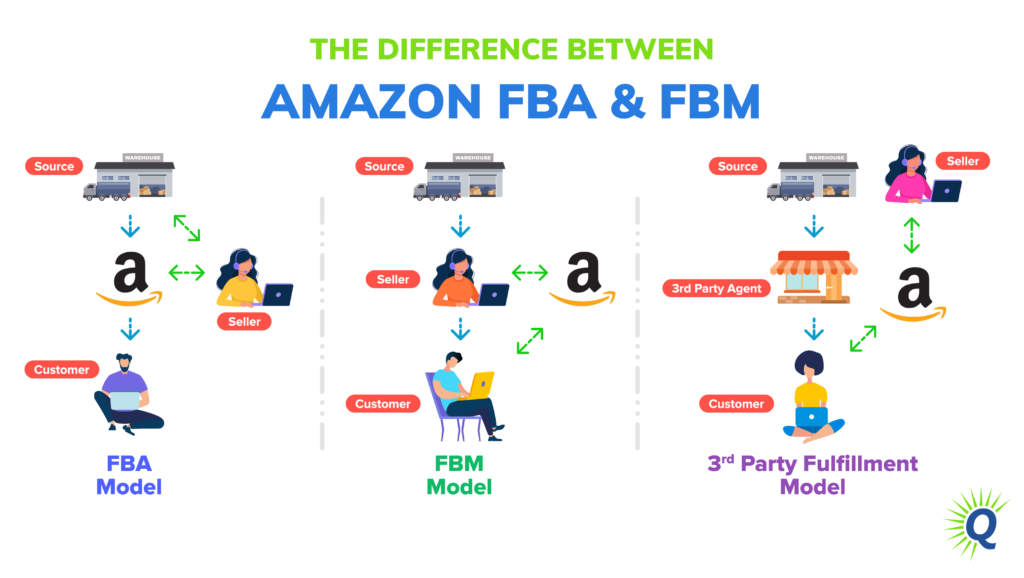

FBA and Amazon Prime
Prime shipping is desirable to buyers. With shipping through Amazon Prime, buyers receive their products within two days for seemingly no extra charge. This shipping method is so popular that Amazon even allows customers to sort products in such a way that non-Prime items are removed from search results.
As of now, there are approximately 150 million global Amazon Prime subscribers. Because Prime shipping is only offered through Fulfilment by Amazon except in specific circumstances, merchants who choose not to use FBA may be waving goodbye to all of those potential customers.
The Amazon Buy Box
The Amazon Buy Box is a featured offer that appears on searches. A Buy Box can be thought of as a recommendation by Amazon based on the buyer’s keywords and the seller’s own metrics.
The Buy Box is one of the quickest ways to sell a product. Having a product featured in the Buy Box is highly coveted by Amazon merchants.
Amazon uses a calculation based on active status, the number of listings and the reliability of shipping when featuring an item. Almost all of the featured items are those that are in the FBA program.
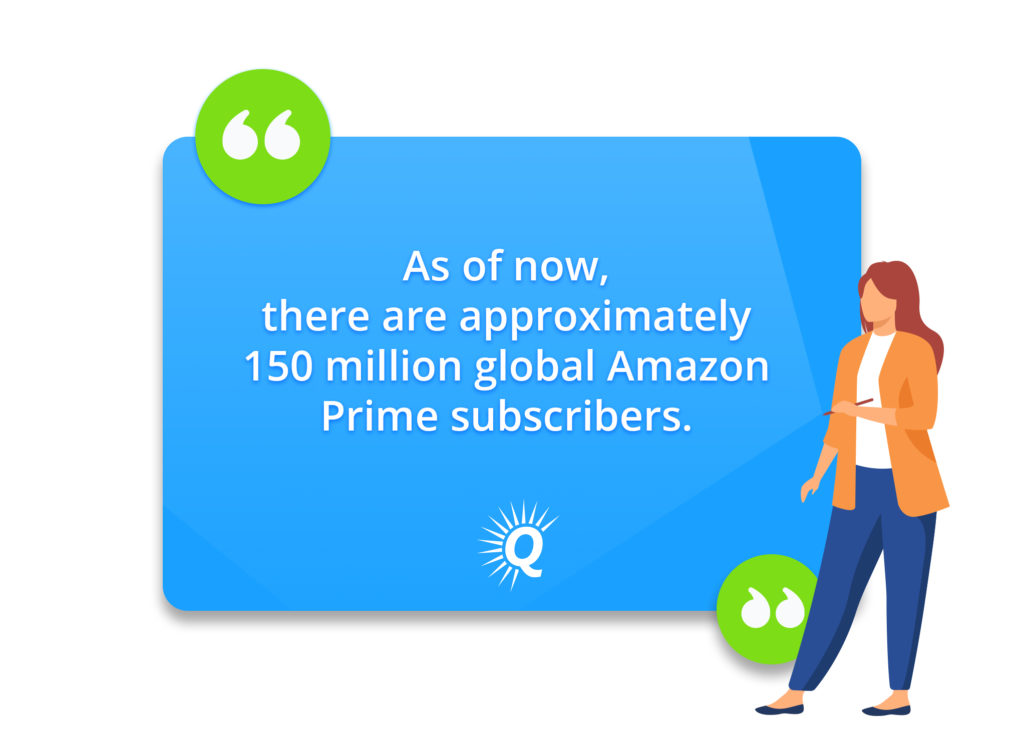

The High Price of FBA
The primary reason to consider not using this fulfillment method is the cost. Amazon charges a monthly inventory storage fee that the merchant must pay regardless of the number of sales made. The cost of the storage fee isn’t a one-lump sum. During the holiday season, October through December, storage fees significantly increase.
In addition to the inventory storage fee, Amazon charges a fulfillment fee. The fulfillment fee covers services that include:
- Picking Items
- Managing Inventory
- Packaging
- Shipping
- Tracking Shipments
- Customer Service
- Returns
These are vital services for merchants but they come at a high price.
Another charge is commission for sales. Amazon calls this commission a referral fee, which is simply the cost of doing business on Amazon. The referral fee is required of all Amazon listings. However, when it accompanies fulfillment fees it can eat into the bottom line in a way that mars profitability of doing business with Amazon.
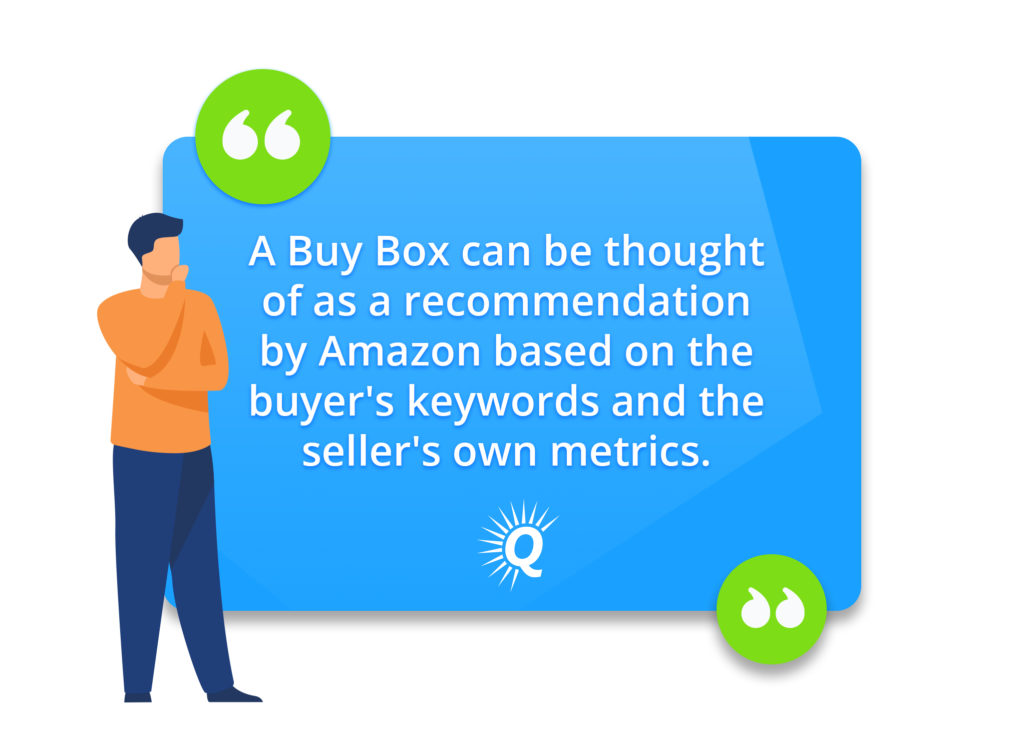

No More Control
Merchants using FBA turn everything over to Amazon. They have no way of knowing how merchandise is handled or packed. They simply trust Amazon to provide the right items that are packaged appropriately so that they don’t become damaged in transit.
Customers who are unhappy with the appearance of products may blame the merchant rather than Amazon. It is rare for items to arrive damaged. However, the merchant’s reputation can also be damaged as a result.
In addition to the method of packaging, customers who use FBA give up their ability to offer branding. This may seem like a non-issue to new merchants but those in the know are aware that branded packaging leads to more sales.
Potential for Poor Customer Satisfaction
Lack of control does not end with the packaging process. All questions and concerns brought up by customers are also handled by Amazon. Those who are unhappy with their experiences may find themselves blaming the merchant. Luckily, Amazon has developed a reputation for excellent customer service, which makes this downside less likely to be an issue.


Packaging Requirements
Amazon requires FBA merchants to provide very specific packaging and labeling for all products. This helps them to inventory and pick products expediently while avoiding delays due to confusing labels.
Those merchants who fail to meet Amazon’s standards may find themselves rejected by Amazon. Merchants must pay specific attention to detail in order to avoid the opportunity cost that comes from a delay in warehousing.
The cost of labeling and packaging items is not a small one. While merchants must label and package their own items for quick storage, there is more room for error than Amazon allows. One mistake on a label and a merchant may find themselves having to pay to retrieve and repackage an entire shipment.


Need Help Managing Your Amazon Store?
Visit Our Partner Page and Explore a List of Experienced Partners We’ve Worked with Over the Years.
FBM: Fulfilment by Merchant
There are sellers who prefer to take order fulfillment and customer service into their own hands. These entrepreneurs can choose to avoid FBA and instead opt for FBM, which means Fulfilment by Merchant. FBM requires the seller to assume all responsibility for packing and shipping orders. Merchants who go this route have greater control over the process. They may also have less overhead as they are not paying Amazon for the FBA option.
FBM Pros and Cons
Pros
- Saves on cost of overhead
- Branded packaging options
- Avoid changing regulations
Cons
- No Buy Box
- Lower search engine ranking
- CSR issues
FBM Options
There are two basic options when it comes to Fulfilment by Merchant. Either can be a good alternative to opting into Fulfilment by Amazon.
The first option is self-managed fulfillment. A business can manage all inventory themselves. They will need to have their own warehouse, warehousing staff, inventory control, packaging, shipping, and customer service departments.
The second is third-party order fulfillment. Third-party logistics, or 3PL, works similarly to FBA. However, companies who solely exist to provide warehousing and distribution may charge significantly less than Amazon’s FBA program. The merchant needs to do their due diligence vetting these third-party suppliers but can find a lower-cost method for meeting customer needs than fulfillment by Amazon if they build the right relationship.
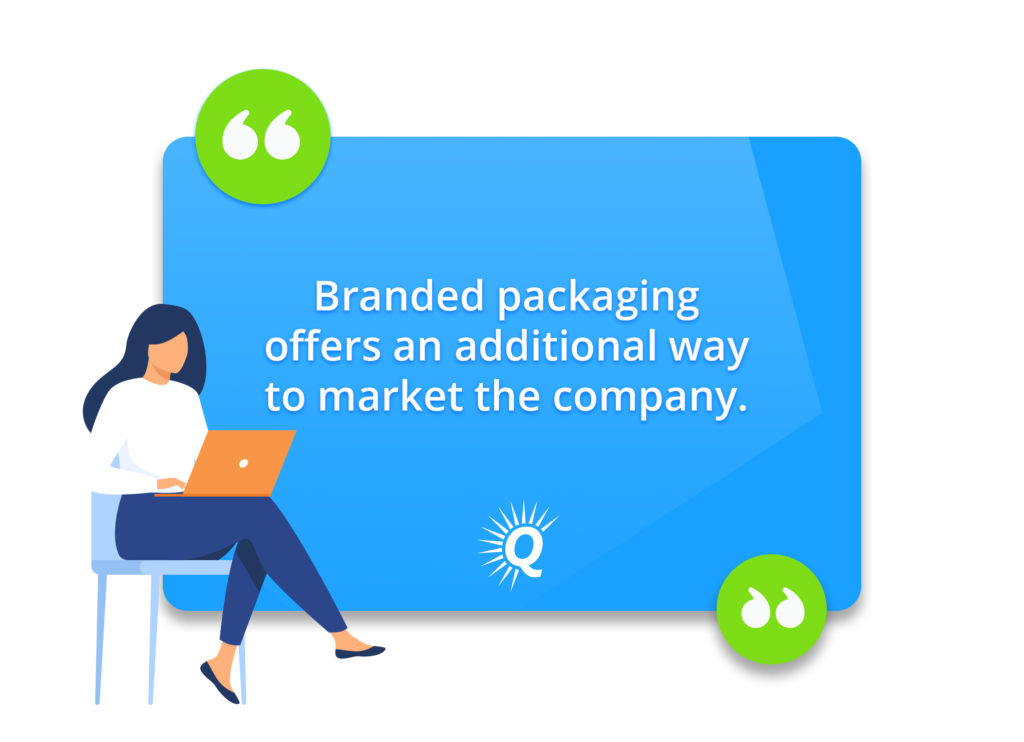

Cost Savings
Arguably the biggest benefit to FBM is cost savings. Merchants who have experience in picking, packaging and shipping may find they can manage all logistics at a lower rate than what they would pay to Amazon.
The cost benefit may not be significant per order, especially if those orders are small and/or light. Conversely, the benefit might be easily realized for items that are large and bulky. Likewise, over time, the cost savings can greatly add up.
Merchandising, Branding and Marketing
Branding may be very important to some merchants. They can use their own packaging materials branded with the company name in order to further advertise the product. Amazon FBA does not offer this option.
Branded packaging offers an additional way to market the company. The additional benefit of having packaging that is catered directly to the products being sold is not missed by most customers. They appreciate the attention to detail and are more likely to continue using a product that has branded packaging.
The pervasive presence of highlighting purchases online puts branded packaging into a new light. Unboxing videos continue to be popular. Photos highlighting purchases are commonplace on social media. A plain, brown box cannot compare to the marketing effects of dynamic packaging.


Avoid Some Changes in Regulations
Amazon has been known to change its rules and regulations regarding FBA from time to time. Using Fulfilment by Merchant, the business can avoid those changes in regulations that can cause a disruption to services.
For instance, if Amazon were to alter its labeling requirements, a merchant would need to revisit how it manages distribution. Whether a company labels products on their own or outsources this process to a third party, every change that Amazon makes to its FBA process costs the merchant more time and money.
Special Note: FBA has led to the creation of a new type of industry. Companies now exist with the sole purpose of managing labeling and packaging for Amazon sellers. Hiring one of these companies for distribution purposes could tackle the problem of keeping up with changing regulations. At the same time, every time a third-party is used profits may suffer.
Prime Shipping with FBM
Prime shipping is a benefit offered to Fulfilment by Amazon merchants. However, there is an option for a program called Seller Fulfilled Prime. In order to qualify for Seller Fulfilled Prime, a merchant must commit to and prove that they can provide two-day delivery at no extra charge.
The cost for two-day delivery is not insignificant, making this program both a pro and a con for FBM merchants. Offering “free” two-day delivery generally means either a large bite into profits or a higher asking price for the merchandise.
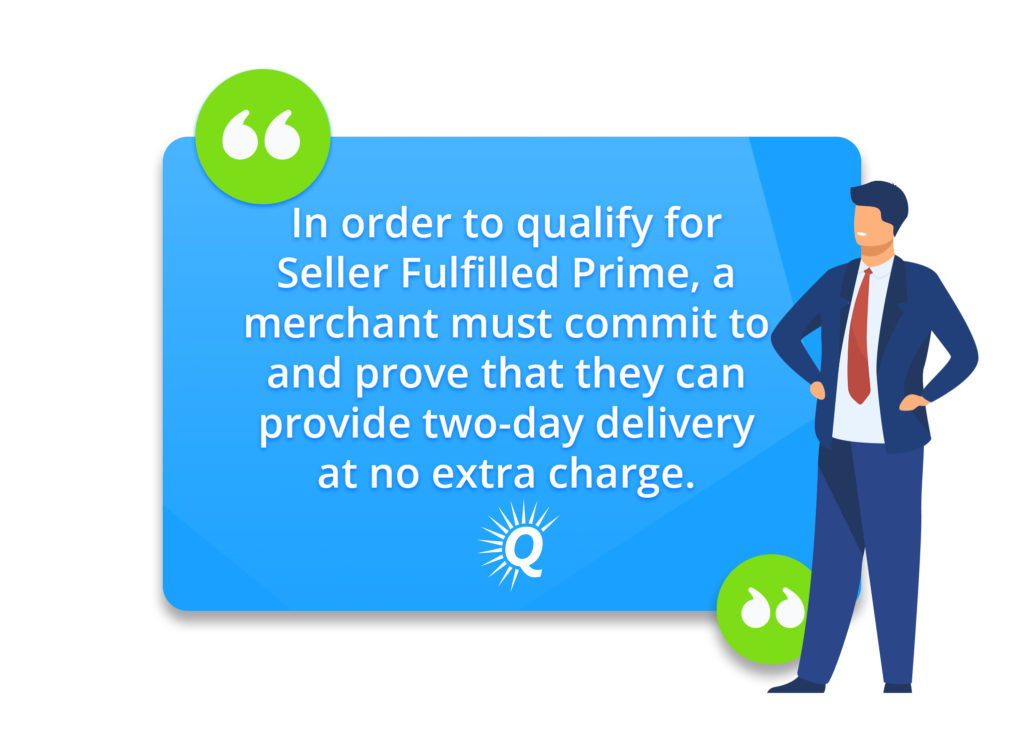

An Amazon seller that chooses Seller Fulfilled Prime must pass a trial period to prove that they are able to keep up with Amazon’s own fulfillment center options. The requirements are both strict and strictly enforced:
- Same-day order picking
- Order cancellation rate under one percent
- At least 99 percent of order ship on time
In addition to this, Seller Fulfilled Prime merchants must also agree to use Amazon Buy Shipping Services for its orders, must agree with the returns policy set forth by Amazon and must allow Amazon to manage customer questions and other inquiries regarding service.
Lack of Buy Box
It is rare that a fulfillment by merchant order will be included in the Amazon Buy Box. Not having a featured item will almost inevitably cause a merchant to lose the sale to a company that uses Amazon FBA.
The only true chance a merchant who fulfills order themselves has to be featured in the Buy Box is to use Seller Fulfilled Prime. However, this process is difficult and can be almost as costly as and much more time-consuming than Amazon FBA.


Lower Ranks in Search Engines
As stated earlier, Amazon customers have the option to ignore any products that are not part of the Amazon Prime program. Fulfillment by Merchant vendors might find themselves not appearing in customer searches. Even if the merchant has lower prices and higher quality they may never be seen by potential buyers.
Search Engine Optimization may factor into a lack of search results as well. The company gives Amazon FBA merchants a boost in searches. They will almost inevitably appear before those items that are fulfilled by an Amazon seller even when the site user hasn’t filtered out non-prime merchandise.
Customer Concerns and Returns
Amazon FBA lets Amazon take over all customer issues, including returns. An Amazon seller that chooses against Amazon FBA must manage all customer issues on their own.
This can be a positive. When an Amazon seller has control over CSR, they can build a reputation that focuses on service and customer satisfaction. If customers are unhappy with the service they receive, the Amazon seller can make the necessary adjustments. This is not possible with Amazon FBA.
Unfortunately, it is much more likely that the merchant will spend more time and money training and hiring staff than they would if they had paid for Amazon FBA from the outset. A seller might also choose to use a third-party CSR firm, which can be a gamble.


Which One is Right for You?
A merchant simply needs to decide whether they want to focus more on sales or order fulfillment when they determine how to build their Amazon business. In the end, large profits can be realized from both fulfillment methods as long as the product is good and inventory remains stable.





